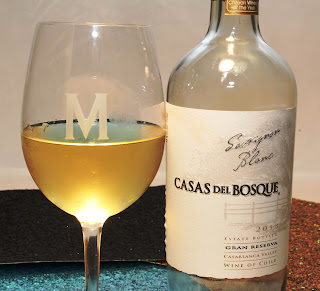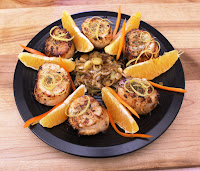“Persuasion
is a strong but subdued outrider.” --- Harold Bloom
 Stubborn me. Try as
I do to keep an open mind, there are times even now when I’m not open to “new”
ideas. They needn’t even be “new” - just
experienced previously as unpleasant by me. But a one or two time experience is not a
thing of always. And while it is important to learn what it is in a wine that
you like, what characteristics and
styles of it that you prefer, that too can be a trap. The yin and the yang of wine. Without knowing what it is you like (and why)
you’re unable to venture out with any direction. Do you prefer Sirah or Shiraz? Same grape. Different wine styles. We could
debate which is more elegant (an emotionally charged word) but would probably
agree that Shiraz is generally fruitier, fuller bodied and higher in
alcohol. Does knowing that you prefer
fruitier wine become helpful when you’re shopping for Merlot or Cabernet
Sauvignon? Of course. That’s the “yin” of wine.
Stubborn me. Try as
I do to keep an open mind, there are times even now when I’m not open to “new”
ideas. They needn’t even be “new” - just
experienced previously as unpleasant by me. But a one or two time experience is not a
thing of always. And while it is important to learn what it is in a wine that
you like, what characteristics and
styles of it that you prefer, that too can be a trap. The yin and the yang of wine. Without knowing what it is you like (and why)
you’re unable to venture out with any direction. Do you prefer Sirah or Shiraz? Same grape. Different wine styles. We could
debate which is more elegant (an emotionally charged word) but would probably
agree that Shiraz is generally fruitier, fuller bodied and higher in
alcohol. Does knowing that you prefer
fruitier wine become helpful when you’re shopping for Merlot or Cabernet
Sauvignon? Of course. That’s the “yin” of wine.
So as someone who
has long preferred Sancerre or Pouilly Fume, I came to understand the
preference of my palate: subdued fruit, somewhat austere and with minerality.
For me, Sauvignon Blanc is all about fresh and being a little racy. Oaking
Sauvignon Blanc just seemed wrong. And the more I continued enjoying my
palate’s preference, and knowing why
my palate preferred it so, the more set I became in my opinion. Thus was born my “yang” of wine, a restrictive
trap.
 |
| Perfect with halibut in lemon-butter-caper sauce |
All that changed
during a private tasting at the winery. The winery had been moved to the top of
my wish list after being unable to include it in a previous trip to
Sonoma. Merry Edwards is famous for her
single vineyard Pinot Noirs. And the story about her Sauvignon Blanc goes that
she developed it after an invitation from the White House in which California
wines were being featured with the dinner. It was suggested that a “white” wine
would be more appropriate. I have no way of verifying what was relayed to me,
and common sense says one doesn’t just make wine quickly. But it’s sensible
that such dinners are planned considerably in advance. And as I said, that’s
the story.
Fact or fancy, the
story deserves to be true because the wine is unique and enticing. The winemaker’s notes explain that the rich
core (54%) of the blend is sourced from vines 25-35 years old. Sauvignon Musque
(at 20%) adds floral aromatics and depth not present in other types of
Sauvignon Blanc. The balance (26%) is comprised of the classic Shenandoah
(Clone 1) and is the more common throughout California.
In the glass, it appears pale lemon falling
quickly to a watery edge; not something I expected to see from an oaked
Sauvignon, and (for me) very heartening. The nose is fresh, another surprise. Whispered
notes of citrus, orange blossom, gooseberry, and ripe pear invite a taste. And
tasting it is where the magic begins.
The mouthfeel is rich and luscious as a result of barrel fermentation
and lees stirring. There’s weight to this wine, making it suitable for many
food pairings, yet it magically retains freshness. Lots of citrus, but melon
balancing the citrus. Gooseberry plays against pear. Lime with minerality but
also floral notes. Lemon that is creamy with hints also of orange crème. A
whisper of smoke adds interest. But the magic doesn’t end yet. Despite the
smoke, the wine finishes crisply. This is a balancing act that has been
perfected.
I suspect, but do not know, that most of the
oak is neutral. Detailed information
about vinification is not readily available.
But then again, we don’t taste information other than what it presents
itself as on our palates. There is a subtlety to this wine that intrigues. An
experience that lingers and invites re-visiting while making each such revisit
a fresh experience. And indeed, that is magic, perhaps best left to mystify us.
Cheers!
……………….. Jim
Like Wine
Mizer on facebook for mini-reviews of wine, industry news, suggested food
pairings and more.
2959
Gravenstein Hwy.
North
Sebastopol, CA 95472
(888)
388-9050
ALC: 13.9%
ARP: $32.
REVIEWS:
91-93 Points Wine Spectator, 91 Connoisseurs Guide.













